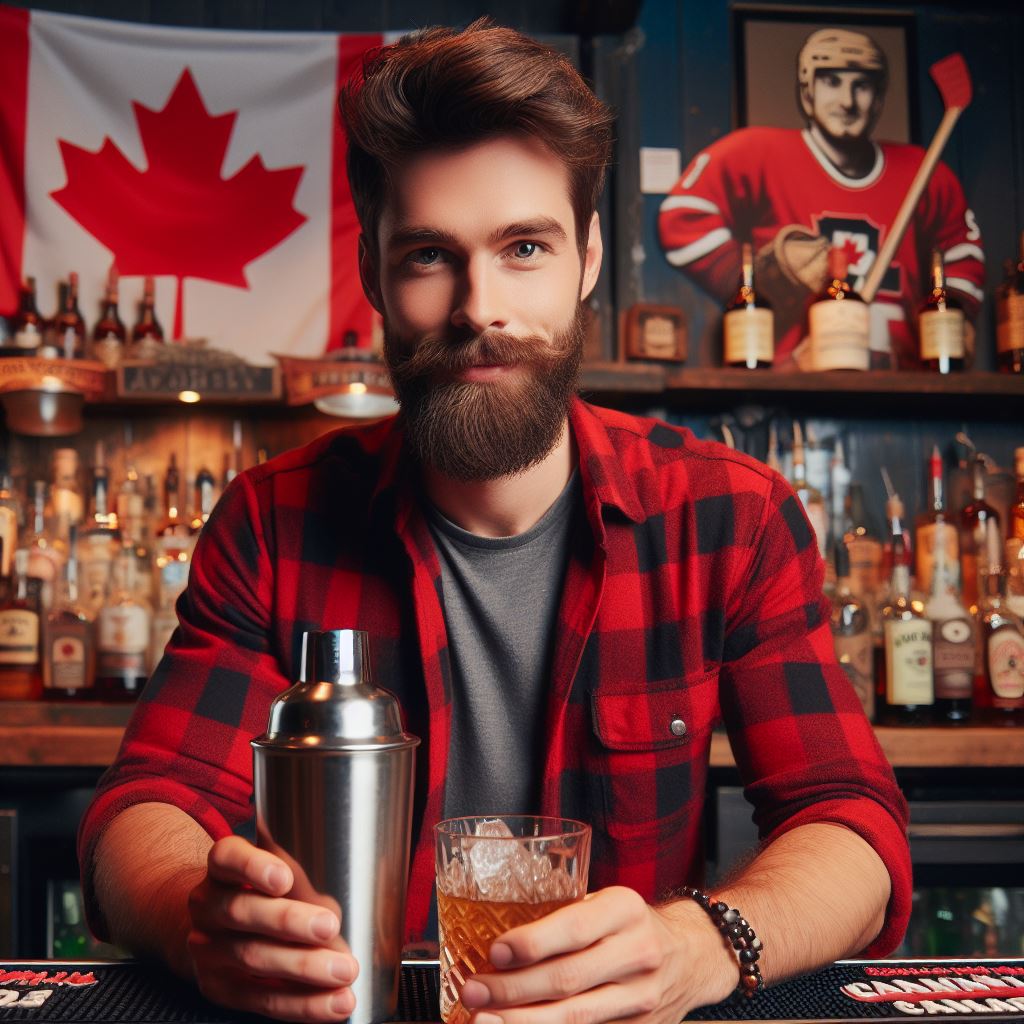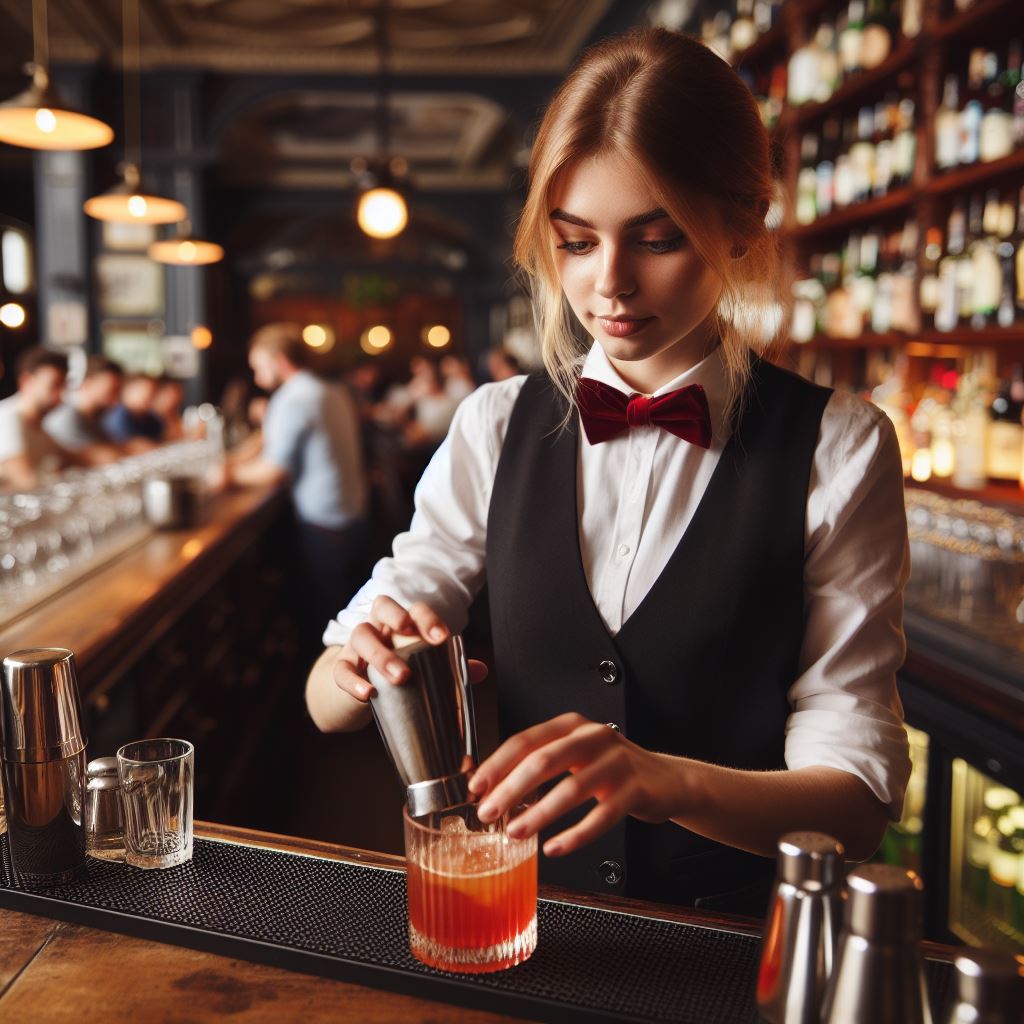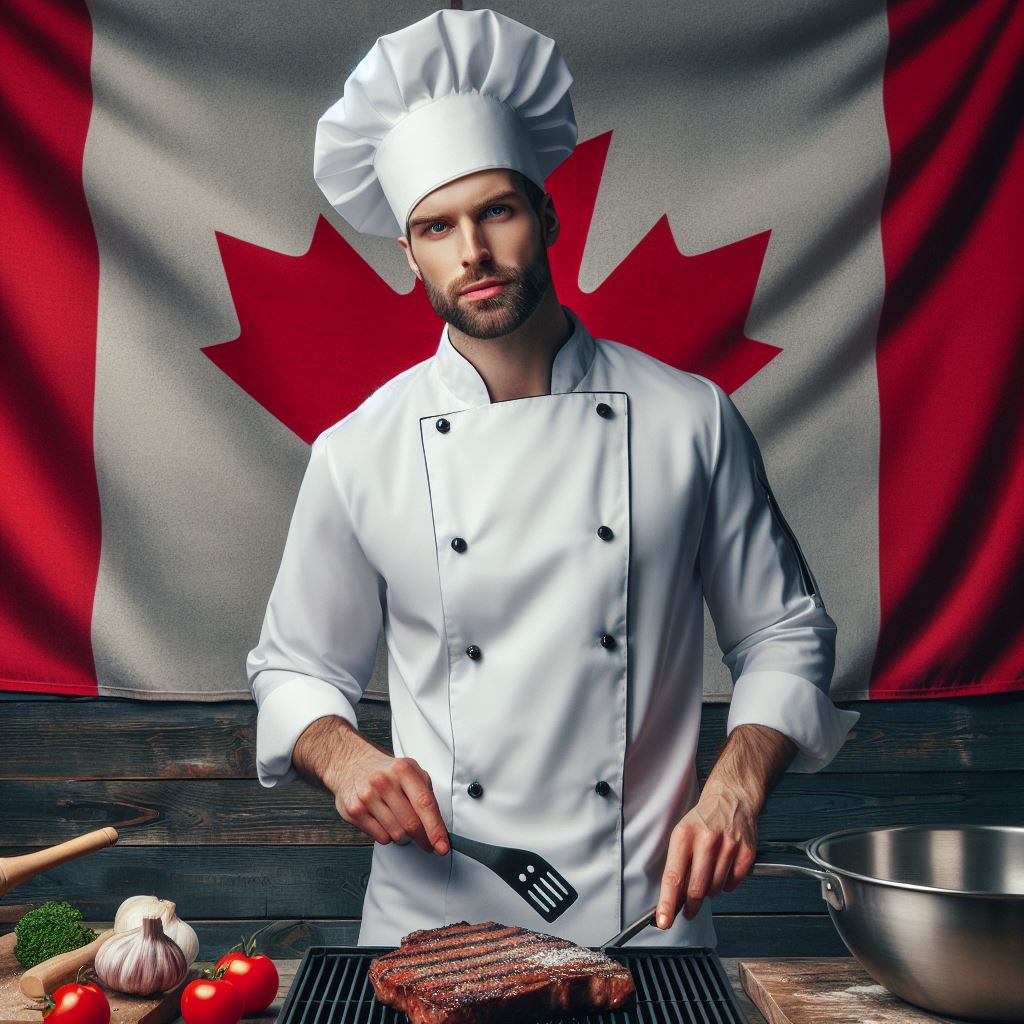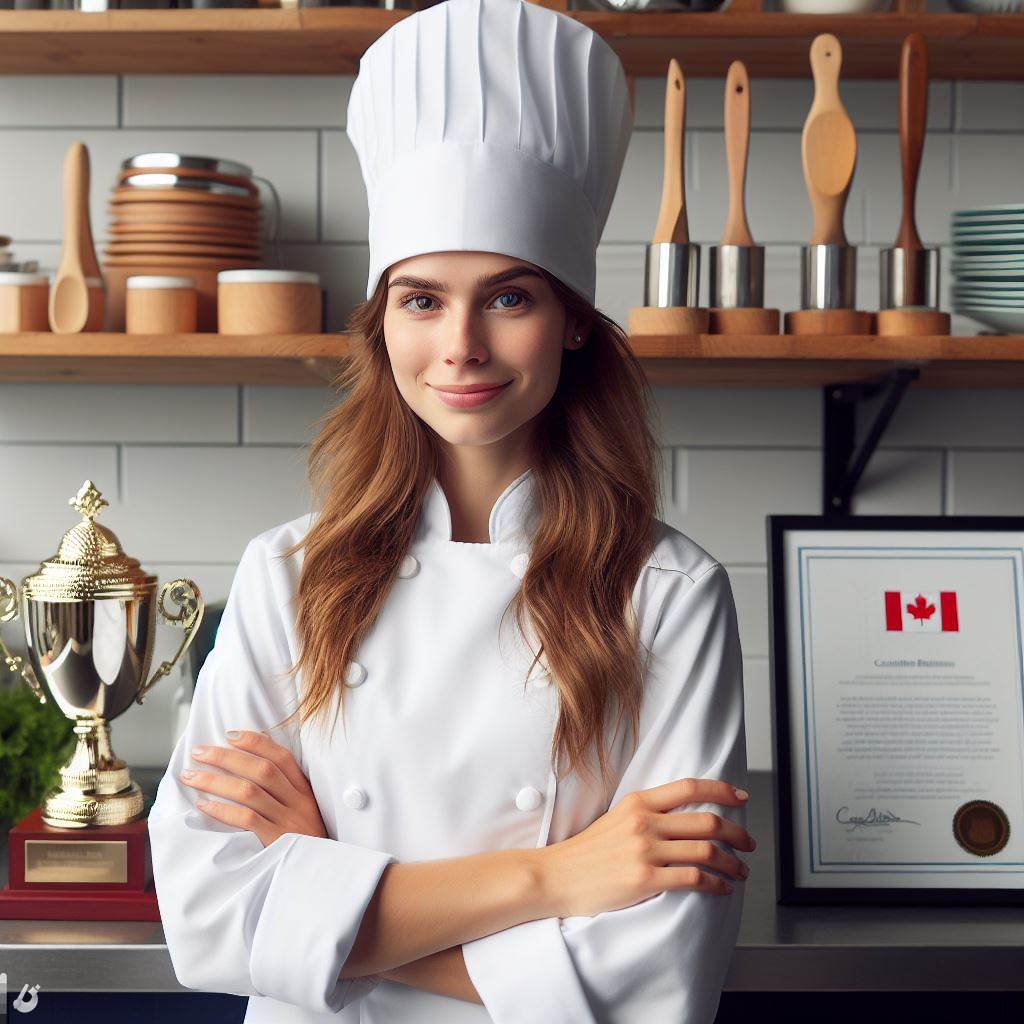Introduction
With the rise of craft cocktail culture, Canadian bars have seen a surge in unique and innovative drink options.
This section will provide an overview of the craft cocktail trend and discuss the importance of exploring these trends specifically in Canadian bars.
Craft cocktails have become increasingly popular in recent years, with mixologists focusing on creating artisanal and handcrafted drinks.
These cocktails emphasize the use of high-quality ingredients and attention to detail.
Understanding the craft cocktail trends in Canadian bars is crucial for several reasons.
Firstly, it allows bar owners and managers to stay competitive in the industry by offering unique and creative drink options.
Secondly, exploring these trends helps to showcase Canada’s diverse cocktail culture and highlights local ingredients and flavors.
This can attract both local and international customers, boosting tourism in the country.
Furthermore, staying up to date with craft cocktail trends allows bartenders and mixologists to continuously improve their skills and knowledge, creating better experiences for customers.
Finally, it is important to explore craft cocktail trends in Canadian bars because it fosters creativity and innovation within the industry.
As bartenders experiment with new ingredients and techniques, they push boundaries and create innovative and exciting drink options.
Most importantly, the craft cocktail trend in Canadian bars offers a wealth of opportunities.
By understanding and embracing these trends, bar owners, bartenders, and customers can benefit from unique and exceptional drink experiences.
Historical Overview of Canadian Bars
Brief history of Canadian bar culture
Canada has a rich history of bar culture that dates back to the early days of colonization.
In the 17th and 18th centuries, taverns were established as gathering places for locals and travelers alike.
These taverns served as vital social hubs where people would come together, share stories, and enjoy a drink.
As Canada grew, so did its bar culture. In the late 19th century, saloons became popular, especially in western Canada during the gold rush.
These saloons were known for their lively atmosphere, gambling tables, and rowdy patrons.
They were often frequented by miners, cowboys, and adventurers looking for a good time.
During the Prohibition era in the 1920s and early 1930s, Canadian bars faced challenges.
While the United States banned the production and sale of alcohol, Canada did not.
This led to the rise of “speakeasies” – hidden drinking establishments where people could enjoy illegal drinks without getting caught.
These speakeasies became havens for those seeking to escape the strict laws and enjoy a night out.
After the repeal of Prohibition, Canadian bars began to evolve.
They became more diverse and started to offer a wider variety of drinks.
Cocktail bars became more prominent, and bartenders started experimenting with new cocktail recipes and techniques.
This period marked the beginning of the craft cocktail movement in Canada.
Traditional drinks and their influence on craft cocktails
Traditional Canadian drinks have had a significant influence on the craft cocktail scene in the country. One such prominent drink is the Caesar.
Invented in Calgary in 1969, the Caesar is a uniquely Canadian cocktail made with vodka, clamato juice, hot sauce, and Worcestershire sauce.
It has become a staple in Canadian bars and is often served with creative garnishes like bacon or pickles.
Other traditional Canadian drinks that have influenced craft cocktails include the Old Fashioned, made with rye whisky, simple syrup, and bitters, and the Tom Collins, a gin-based cocktail with lemon juice and simple syrup.
These classic recipes have been reimagined and reinvented by modern bartenders, adding their own twists and unique flavors to create craft cocktails that pay homage to the past while embracing the present.
Canadian bar culture continues to evolve, with a focus on using local and seasonal ingredients in craft cocktails.
Bartenders are constantly experimenting with new flavors, techniques, and presentations to create innovative and exciting drinks.
From homemade infusions to innovative garnishes, Canadian bars are at the forefront of the craft cocktail movement, pushing boundaries and delighting customers with their creativity.
In Basically, the historical overview of Canadian bars reveals a rich and diverse culture that has influenced the current craft cocktail trends.
From the early days of taverns to the vibrant speakeasies of Prohibition, Canada has always had a love for good drinks and socializing.
Traditional Canadian drinks, like the Caesar, Old Fashioned, and Tom Collins, continue to inspire bartenders as they create unique and delicious craft cocktails that reflect the rich history of Canadian bar culture.
Rise of Craft Cocktails in Canada
Influence of the mixology revival in the United States
- The resurgence of craft cocktails in the United States has had a significant influence on Canada.
- Canadian bartenders were inspired by the creativity and innovation happening in American bars.
- They began experimenting with unique flavors, techniques, and quality ingredients in their own cocktails.
- This mixology revival created a renewed interest in craft cocktails among Canadian consumers.
- People were eager to experience the artistry and elevated experience that craft cocktails offered.
- Canadian bars started to focus on creating unique, handcrafted drinks that satisfied consumers’ growing expectations.
- The popularity of craft cocktails quickly spread across the country, from Vancouver to Toronto.
- This movement transformed the Canadian bar scene and set a new standard for cocktail culture.
- Consumers started seeking out bars that specialized in craft cocktails, driving the demand even further.
- As a result, Canadian bars began to prioritize quality mixology and craftsmanship in their drink offerings.
Pioneering Canadian bars and mixologists
- Several Canadian bars played a vital role in pioneering the craft cocktail movement.
- Notable establishments, such as The Keefer Bar in Vancouver and BarChef in Toronto, led the way.
- These bars were known for their commitment to using fresh, local ingredients and pushing the boundaries of mixology.
- They trained aspiring mixologists, sharing their knowledge and passion for craft cocktails.
- Canadian mixologists became recognized for their skills and innovative approaches to cocktail creation.
- These pioneers inspired a new generation of bartenders who embraced the craft cocktail philosophy.
- Today, many Canadian bars pride themselves on their mixology expertise and unique drink offerings.
- These establishments continue to drive the evolution of craft cocktails in Canada, setting new trends and standards.
Impact of craft cocktail competitions and events
- Craft cocktail competitions and events have played a significant role in elevating Canada’s mixology scene.
- These competitions provide a platform for talented bartenders to showcase their skills and creativity.
- Competitors are encouraged to craft innovative cocktails that incorporate local flavors and ingredients.
- These events attract cocktail enthusiasts and industry professionals, fostering networking and collaboration.
- As a result, the craft cocktail community in Canada has grown stronger and more connected.
- Events like Toronto Cocktail Week and Vancouver Cocktail Festival celebrate the craft and elevate the consumer experience.
- These gatherings inspire mixologists to continuously improve their craft, pushing boundaries and exploring new techniques.
- Craft cocktail competitions and events have become an integral part of the Canadian mixology landscape.
- They showcase the talent, creativity, and passion that Canadian mixologists bring to the craft cocktail industry.
- By shining a spotlight on these individuals and their creations, they further fuel the rise of craft cocktails in Canada.
In short, the rise of craft cocktails in Canada can be attributed to the influence of the mixology revival in the United States, pioneering Canadian bars and mixologists, and the impact of craft cocktail competitions and events.
This movement has transformed the Canadian bar scene, driving the demand for high-quality, handcrafted cocktails.
Canadian mixologists continue to push the boundaries of mixology, creating unique and innovative drink offerings.
The future of craft cocktails in Canada looks bright as the community grows stronger and more connected.
Read: Seasonal Bartending: Canada’s Approach
Key Ingredients and Techniques in Craft Cocktails
Emphasis on local and seasonal ingredients
- Using local and seasonal ingredients is a key trend in Canadian bars.
- Bars are sourcing ingredients from nearby farms and markets to create unique flavors.
- Seasonal fruits, herbs, and even Canadian maple syrup are popular choices.
- Using local ingredients not only supports the community but also ensures freshness and quality.
- This trend allows bartenders to showcase Canadian flavors and create truly regional cocktails.
Mixology techniques and their role in creating unique flavors
- Mixology techniques are essential for creating balanced and flavorful craft cocktails.
- Bartenders are using techniques like muddling, shaking, stirring, and layering to enhance flavors.
- Muddling fresh herbs or fruits can release their essential oils and add depth to the drink.
- Shaking with ice not only chills the cocktail but also softens strong flavors and creates aeration.
- Stirring is preferred for spirit-forward cocktails to maintain clarity and a silky texture.
- Layering different spirits or liqueurs creates visually appealing and complex flavor profiles.
Showcase of popular ingredients and techniques used in Canadian bars
- Popular ingredients include Canadian whisky, local craft beers, and homemade infusions.
- Canadian maple syrup is widely used as a sweetener, adding a unique and distinct flavor.
- Infusions are created by steeping fruits, spices, or herbs in alcohol to extract their flavors.
- Bars are also incorporating ingredients like peychaud’s bitters and maple-smoked bacon.
- Cocktail garnishes like edible flowers, dehydrated fruits, and hand-cut ice add visual appeal.
- Techniques like barrel-aging cocktails and using smoking guns are gaining popularity.
In fact, Canadian bars are embracing the use of local and seasonal ingredients, as well as mixology techniques, to create innovative and flavorful craft cocktails.
By emphasizing regional flavors and supporting local producers, these bars are providing a unique experience to cocktail enthusiasts.
From muddling fresh herbs to barrel-aging cocktails, Canadian bars are pushing the boundaries of mixology and continuously evolving the craft cocktail scene.
Read: Essential Bar Tools for Canadian Bartenders

Regional Differences in Craft Cocktail Trends
Distinctive cocktail trends in regions like Vancouver, Toronto, and Montreal
- In Vancouver, there is a strong emphasis on locally sourced and organic ingredients for craft cocktails.
- Toronto is known for its vibrant cocktail scene, with mixologists experimenting with unique flavor combinations.
- Montreal’s craft cocktail trend focuses on classic recipes with a modern twist, using homemade infusions and bitters.
Use of local spirits and flavors to reflect regional identity
- Canadian craft cocktails often incorporate spirits made from local ingredients, such as maple syrup or icewine.
- Regional flavors like Quebecois apple brandy or British Columbia’s craft gin give a unique twist to cocktails.
- Craft distilleries in each region contribute to the availability of local spirits, adding to the regional identity.
Examples of signature cocktails from different Canadian regions
- Vancouver: The “West Coast Mule” combines local craft vodka, ginger beer, and fresh lime juice.
- Toronto: The “CN Tower Sour” features Ontario whiskey, maple syrup, lemon juice, and a touch of bitters.
- Montreal: The “Montreal Martini” is a twist on the classic, made with homemade herb-infused vodka and Quebec cranberry liqueur.
Ultimately, craft cocktail trends in Canadian bars showcase regional differences in taste preferences, ingredients, and mixology techniques.
Whether it’s Vancouver’s focus on local and organic ingredients, Toronto’s experimentation with flavor combinations, or Montreal’s infusion of traditional drinks with modern twists, each region has its own unique approach to craft cocktails.
The use of local spirits and flavors further enhances the sense of regional identity, with maple syrup, icewine, apple brandy, and craft gin adding distinctive elements to the mix.
Signature cocktails from each region exemplify these trends, incorporating local ingredients and reflecting the cultural and geographical influences of the area.
The craft cocktail scene in Canada continues to evolve, offering bar-goers and mixologists alike a taste of the diverse flavors and creativity found throughout the country.
Read: Bartending: A Career Path in Canada
Evolving Concepts and Themes in Canadian Bars
Focus on sustainability and zero-waste practices
- Canadian bars are increasingly adopting sustainable practices to reduce their environmental impact.
- Bartenders are using ingredients that would otherwise be discarded to create unique and flavorful cocktails.
- By embracing zero-waste practices, Canadian bars are becoming more environmentally conscious and socially responsible.
- Bars are implementing measures such as composting, recycling, and using biodegradable straws and containers.
- Customers appreciate the effort to minimize waste and are more likely to support eco-friendly establishments.
Fusion of different cuisines and international influences
- Canadian bars are blending different culinary traditions to create innovative and exciting cocktails.
- Bartenders are experimenting with ingredients from various cuisines, such as Asian, Latin American, and Middle Eastern.
- These influences can be seen in the use of exotic spices, tropical fruits, and unique spirits.
- Cocktails that combine flavors from different cultures provide a multicultural experience for customers.
- The fusion of cuisines in Canadian bars showcases the diversity and cultural richness of the country.
Collaborations between bartenders and local artisans
- Canadian bars are partnering with local artisans, such as brewers, distillers, and farmers, to create exceptional cocktails.
- By collaborating with local craftsmen, bartenders can access high-quality ingredients and unique flavors.
- These partnerships not only support local businesses but also promote a sense of community.
- Bartenders showcase the craftsmanship of their partners by featuring their products in their cocktails.
- Collaborations add a personal touch to the cocktail experience and create a deeper connection with the local community.
In general, Canadian bars are evolving to incorporate sustainability, fusion of cuisines, and collaborations with local artisans.
These trends not only enhance the cocktail experience but also contribute to a more environmentally conscious and culturally diverse bar scene.
By focusing on sustainability and zero-waste practices, bars are reducing their environmental impact and attracting customers who value eco-friendly establishments.
The fusion of different cuisines and international influences brings a multicultural experience to customers, showcasing the diversity of Canada.
Collaborations between bartenders and local artisans support local businesses and create a sense of community.
These evolving concepts and themes in Canadian bars contribute to a vibrant and innovative cocktail culture.
Read: The Role of a Bartender: Beyond Mixing
The Impact of Social Media on Craft Cocktail Trends
Role of platforms like Instagram in popularizing craft cocktails
- Social media platforms like Instagram have played a significant role in the rise of craft cocktails.
- With their visually appealing nature, craft cocktails are perfect for sharing on Instagram.
- These platforms provide a space for bartenders and enthusiasts to showcase their unique creations.
- By sharing high-quality photos and videos, Instagram has helped popularize craft cocktails.
- Hashtags like #craftcocktails and #mixology have created online communities centered around this trend.
Influence of online communities on shaping trends and expectations
- Online communities formed through social media have a significant impact on shaping craft cocktail trends.
- Members of these communities share recipes, techniques, and innovations with each other.
- By exchanging ideas and experiences, they continuously push the boundaries of what is possible in mixology.
- As these communities grow, they create new expectations and standards for craft cocktails.
- Bartenders are now influenced by the feedback and preferences of these online communities.
Use of social media for showcasing unique cocktail presentations
- Social media platforms allow bartenders to showcase their unique cocktail presentations.
- Unconventional garnishes, innovative glassware, and creative drink styling have become popular on social media.
- Bartenders use platforms like Instagram to lure customers with visually enticing cocktail presentations.
- The artistry and attention to detail in these cocktails help establishments stand out in a crowded market.
- As consumers become more visually oriented, this trend is expected to continue growing.
The impact of social media on craft cocktail trends cannot be underestimated.
Platforms like Instagram have played a crucial role in popularizing craft cocktails through their visually appealing nature.
Craft cocktails are perfect for sharing on Instagram due to their vibrant colors, unique ingredients, and artistic presentations.
By sharing high-quality photos and videos, bartenders and enthusiasts have been able to capture the attention of a larger audience.
The Social Media Impact: Shaping Craft Cocktail Trends in Canadian Bars
Hashtags like #craftcocktails and #mixology have created online communities centered around this trend.
These communities have a significant influence on shaping craft cocktail trends.
Members share recipes, techniques, and innovations, pushing the boundaries of what is possible in mixology.
As these communities grow, they create new expectations and standards for bartenders to meet.
Unlock Your Career Potential
Visualize a clear path to success with our tailored Career Consulting service. Personalized insights in just 1-3 days.
Get StartedAnother major influence of social media on craft cocktail trends is the use of platforms to showcase unique cocktail presentations.
Bartenders have started using unconventional garnishes, innovative glassware, and creative drink styling to create visually enticing cocktails.
The attention to detail and artistry involved in these cocktails helps establishments stand out in a crowded market.
Consumers, who are increasingly visually oriented, are drawn to these unique presentations, making them more likely to visit the bar.
In essence, social media has had a significant impact on craft cocktail trends in Canadian bars.
Platforms like Instagram have played a crucial role in popularizing craft cocktails by allowing bartenders and enthusiasts to share their unique creations.
Online communities formed through social media have influenced the development of new trends and expectations.
Additionally, social media has been used to showcase visually appealing cocktail presentations that attract customers.
As social media continues to evolve, it will undoubtedly continue to shape the future of craft cocktails.
Future of Craft Cocktail Trends in Canadian Bars
As the craft cocktail scene continues to evolve, the future of Canadian bars holds exciting possibilities.
Mixologists and bartenders are constantly pushing boundaries, exploring new techniques, and experimenting with flavors to deliver innovative and memorable drinking experiences.
Predictions and emerging concepts in mixology
A key prediction for the future is an increased emphasis on local ingredients.
Utilizing indigenous produce and spirits allows bars to create cocktails that reflect the terroir of the region.
This not only enhances the sense of place but also supports local farmers and producers, promoting sustainability.
Additionally, the rise of health-conscious consumers has led to a demand for low-alcohol and non-alcoholic cocktails.
These beverages offer a lighter alternative to traditional cocktails, appealing to those who want to enjoy a flavorful drink without the effects of excessive alcohol consumption.
Technology is also set to play a significant role in the future of mixology.
From interactive drink menus on tablets to robot bartenders, bars are looking to incorporate innovative technologies to enhance the overall customer experience and create unique, Instagram-worthy moments.
Experimental techniques and unusual flavor combinations
The future will also see mixologists experimenting with unconventional flavor combinations and techniques.
Molecular gastronomy techniques, such as foams and caviar, will add a touch of culinary artistry to cocktails.
Unusual ingredients, such as exotic fruits or herbs, will be utilized to create unexpected flavor profiles that tantalize the taste buds.
Bar-goers can also expect to see unique garnishes and presentation techniques that elevate the visual appeal of cocktails.
From edible flowers to intricate ice sculptures, these artistic touches will create a sense of wonder and enhance the overall drinking experience.
Consumer preferences and the demand for innovation
Consumer preferences are shifting towards sustainable practices, leading bars to adopt eco-friendly approaches.
Biodegradable or reusable cocktail accessories, such as metal straws or compostable coasters, are becoming more common in Canadian bars.
Moreover, the demand for locally sourced and organic spirits continues to grow as consumers become more conscious of the origin and quality of their drinks.
Canadian distilleries are gaining recognition for their craftsmanship, and bartenders are embracing these local gems to create unique cocktails that showcase the country’s diverse flavors.
Customization and personalization will be key in the future of craft cocktails.
Bars will offer options for customers to tailor their drinks, allowing them to choose specific spirits, flavors, or even garnishes.
This level of customization ensures that every drink is unique while satisfying individual tastes.
Last but not least, the future holds nostalgia and unexpected flavor combinations.
Bartenders will experiment with nostalgic flavors, bringing back childhood favorites or reinventing classic cocktails.
Unexpected elements like savory ingredients or unusual spices will add complexity and intrigue to traditional drinks.
Generally, the future of craft cocktail trends in Canadian bars promises exciting possibilities.
With a focus on local ingredients, experimentation with new techniques and flavors, and a continued drive for innovation, mixologists will continue to push the boundaries of traditional cocktail-making.
The consumer’s demand for sustainable practices, customization, and unexpected experiences will shape the future landscape of Canadian bars.
Conclusion
Recap of the main points discussed
In this section, we explored the craft cocktail trends in Canadian bars.
We started by discussing the rise in popularity of craft cocktails and the reasons behind it.
We then delved into the various trends that have emerged in the Canadian cocktail scene, such as the use of local and seasonal ingredients, the focus on sustainability, and the revival of classic cocktails with a modern twist.
Overall significance of craft cocktail trends in Canadian bars
Craft cocktails have not only transformed the Canadian bar scene but also have become a reflection of the changing tastes and preferences of consumers.
These trends have given bartenders the opportunity to push the boundaries of mixology and create unique and innovative drinks.
Additionally, the increased demand for craft cocktails has also led to the growth of small-scale local distilleries and the support of local farmers and suppliers.
Encouragement to explore their local craft cocktail scene
As the craft cocktail scene continues to evolve, we encourage readers to explore their local bars and experience the creativity and craftsmanship firsthand.
By trying different cocktails, they can appreciate the artistry that goes into making each drink and support their community’s mixologists, distilleries, and suppliers.
Exploring the craft cocktail scene allows individuals to expand their palates and discover new flavors while supporting the local economy.
All in all, the craft cocktail trends in Canadian bars have revolutionized the way we enjoy our drinks.
From innovative ingredients to sustainable practices, these trends have not only transformed the bar scene but also provided a platform for bartenders to showcase their talent.
So, grab a seat at your local craft cocktail bar and embark on a journey of flavor, creativity, and community support.




